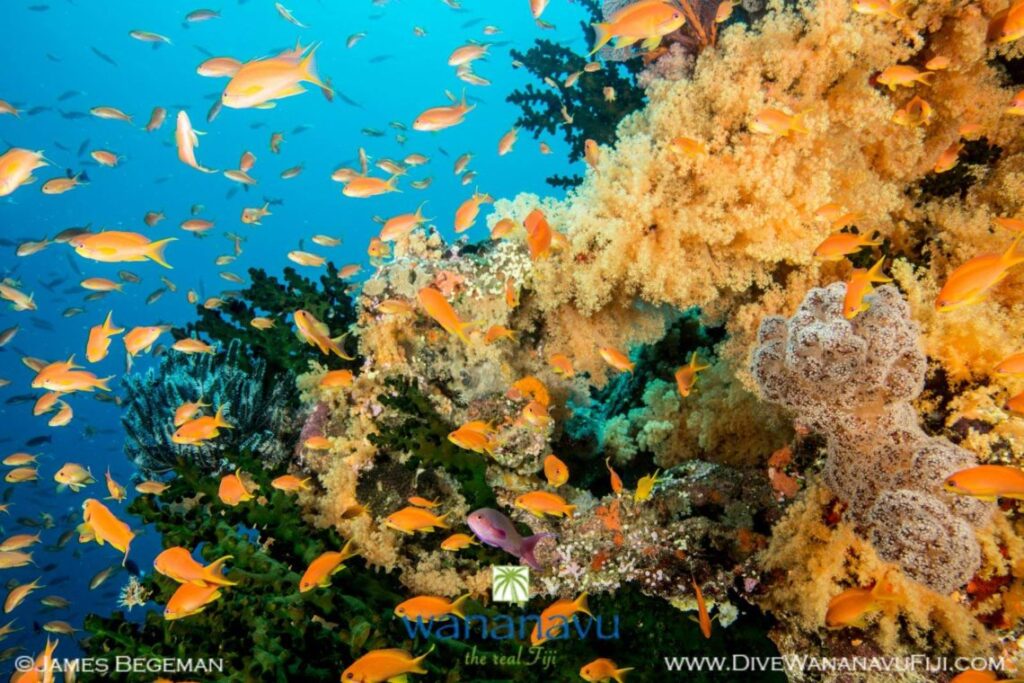Tourism Suncoast has been working with Wildlife Conservation Society, our communities from district of Nakorotubu in the province of Ra, the Ra Provincial office, the traditional/customary owners of Vatu-i-Ra Island to develop the Vatu-i-Ra Conservation Park.
The traditional/customary resource owners would like to see this area, including the surrounding reefs, protected because of their cultural, historical and biological significance.
The area covered by the Vatu-i-Ra Conservation Park has been found to be increasingly under threat from human activities including burning, littering and illegal fishing. The designation of the area as a conservation park and its management plan will guide what activities can or cannot occur, and help conserve this national biodiversity treasure.
In February 2016, a workshop with community representatives from the Nakorotubu districts,Tourism Suncoast operators, Ra Provincial Office and NGOs (Birdlife International and Nature Fiji-Mareqeti Viti), met to discuss the first draft management plan.
We all had agreement on the rules that would apply to terrestrial and marine parts of the Vatu-i-Ra Conservation Park. All the attendees hoped to finalise and have the management plan endorsed at one of the Ra Provincial meetings later this year.
The completion of the management plan for the Vatu-i-Ra Conservation Park will serve as the foundation for setting up a voluntary contribution to conservation scheme, similar and modelled off the Namena Marine Park Reserve in Kubulau.
The fund, when managed in an open, well governed and transparent way, will contribute to the conservation of this highly diverse area, protect the cultural and historical values that are important to local communities, while supporting education and community development that improves the quality of life and living standards resource owners and communities in the Nakorotubu district.
 The Vatu-i-Ra Seascape
The Vatu-i-Ra Seascape
Stretching across the channel that links Fiji’s two main islands of Viti Levu and Vanua Levu is a blue-green jewel of forest and reef.
Called Vatu-i-Ra, the seascape and its vibrant seas are laced with coral reefs, masses of colourful reef fish and sea turtles, while the
adjoining landscape of coastal forests is alive with crested iguanas and tree frogs.
It is a place where humpback whales come to bear calves, black noddy sea birds congregate to nest and dolphins rest in the lee of reefs after their nights chasing pelagic fish, squid and shrimp into the deep.
The Vatu-i-Ra Seascape, which includes the provinces of Bua, Lomaiviti, Ra and Tailevu and their adjacent waters, is nourished by the deep Vatu-i-Ra and Lomaiviti Passages. The currents generated from squeezing the sea through narrow channels down to 700 metres
support an astounding diversity of life including coastal and offshore fisheries. The seamounts and pinnacles are a haven for divers, who
travel from all over the world to see the spectacular colours and sights of the Vatu-i-Ra Seascape.
Fijian culture, economy and our people’s well-being are highly reliant and centered on the habitats, species and the ecosystem services
the seascape provides. Vatu-i-Ra provides food and livelihoods to over 116,000 people living across the seascape. Today, the natural resources on which so many people depend are under threat. Poor land-based practices and increased demands for cash income and materials goods, coupled with growing populations and access to markets have led to substantial increased pressure on those resources.
Uncontrolled extraction, poor compliance and enforcement of national laws means forest and fisheries resources are, or close to being, fully exploited.
Local communities have strong historical and cultural connections to their natural resources, and have maintained their traditional
management practices such as tabu (temporal fisheries closures) within their fishing grounds. If carefully supported and empowered,
they can become strong stewards of their natural environment.
A growing understanding of the importance of taking a holistic ecosystem based management approach is resulting in strong, unprecedented partnerships between national government, provincial offices, communities, private sector, non-government
organisations and research institutions.
Vatu-i-Ra Seascape Details and Statistics
- Total area: over 27,000 square kilometres of coastal lands and seas
- Networks of community managed marine areas, including Namena, the nation’s largest ‘no take’ reserve where fishing is prohibited
At least 120 plant species unique to the area - Over 300 reef building coral species
- More than 1,000 fish species
- Important habitat for reef and deeper water sharks
- Important area for migratory whales and turtles, as well as dolphins
- Supports endangered populations of bumphead parrotfish and humphead wrasse
- World class diving destination, attracting approximately 36,000 tourists per year
- Annual value of tourism and fisheries in the seascape estimated at FJD 72 million (USD 35 million)
